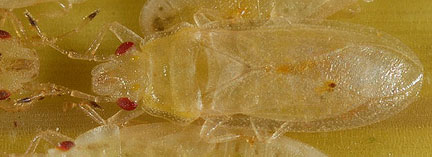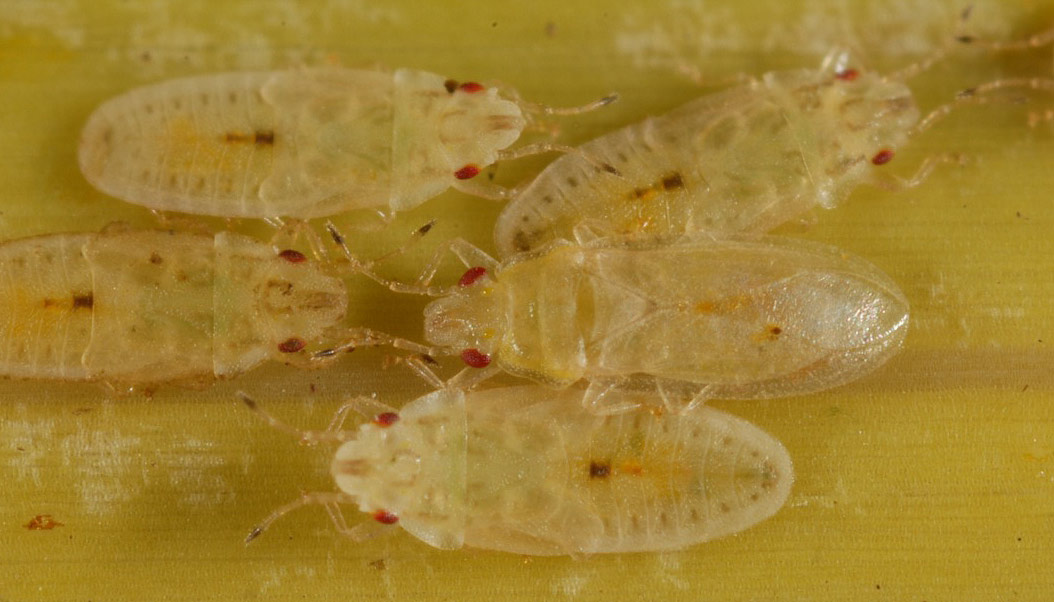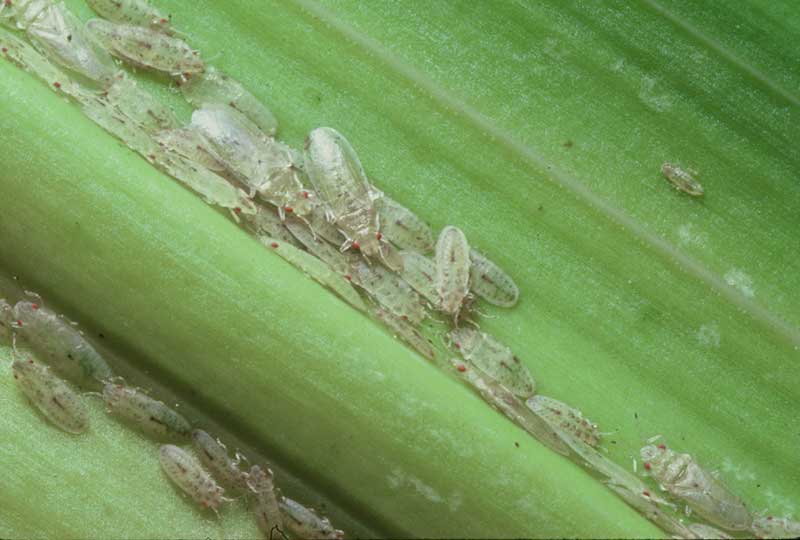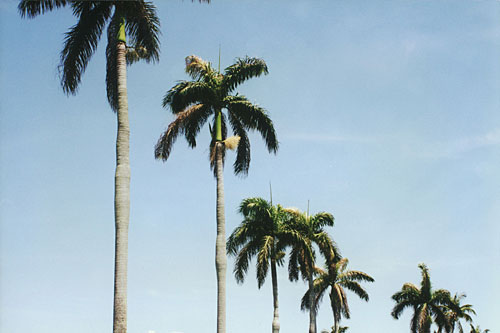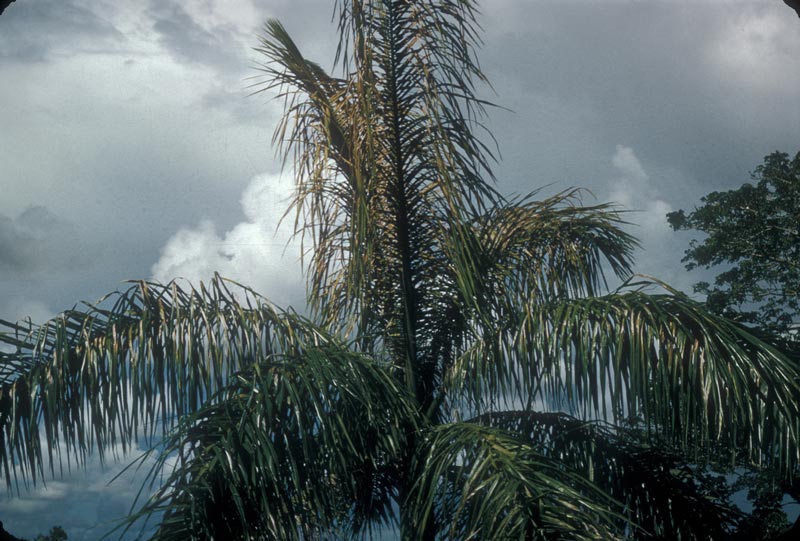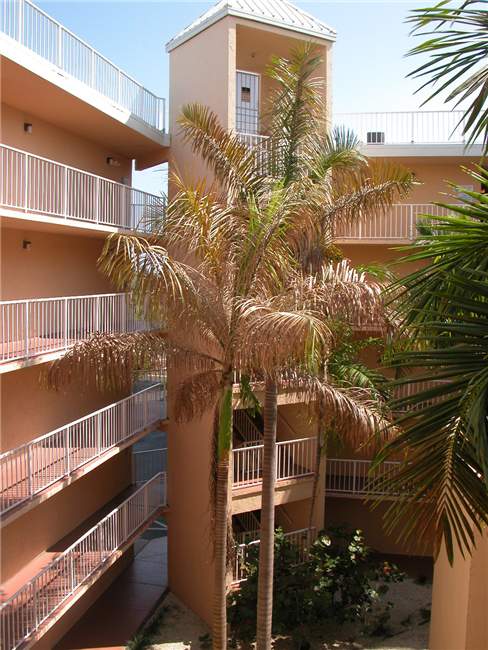Royal Palm Bug
|
adult; Photo by Lyle Buss, University of Florida |
|
adult and nymphs; Photo by Lyle Buss, University of Florida |
|
adults and nymphs; Photo by J. de Filippis, from Insects on Palms, used with permission by CABI Publications |
|
adults and nymphs on leaflet; Photo by Doug Caldwell, University of Florida |
|
Cuban royal palms with damage from royal palm bug; Photo by F.W. Howard |
|
leaf damage from royal palm bug; Photo courtesy of University of Florida |
|
close-up of royal palm bug leaf damage; Photo by F.W. Howard |
|
severe damage caused by royal palm bug; Photo by T.K. Broschat, University of Florida, IFAS/FLREC |
Scientific name
Xylastodoris luteolus Barber
Family
Thaumastocoridae (Suborder Heteroptera)
Description
Adult: Length approximately 2.0 to 2.5 mm; body shape is elongate-oval, somewhat flattened; pale yellow-green in color except for the red eyes and the brown terminal half of the fourth antennal segment; head is slightly wider than long; rostellum arising from front part of head; forewings are hardened (leathery) at the base and membranous at the apicalapical:
at the tip of a structure
half, forewings held flat on the back with the ends overlapping; hindwings are entirely membranous and shorter than the forewings.
Egg: Length 0.5 mm; elongate in shape and oval in cross section; pale tan in color; capped at one end by a white operculum.
Nymph: Length ranges from 0.71 to 2.0 mm; coloration similar to adults; lacks wings
Diagnostic features
The royal palm bug is very small, reaching a length of only 2.5 mm. Adults are pale yellow-green in color except for the red eyes. Basalbasal:
at the base of a structure
half of forewings are leathery and the apicalapical:
at the tip of a structure
half is membranous. Forewings are held flat on the back with the ends overlapping.
Distribution
Known from Florida and Cuba, which coincides with the distribution of Roystonea regia.
Hosts
The Cuban royal palm, Roystonea regia, is the only known host.
Additional comments
This species is the only representative of the family in North America.
The royal palm bug is found primarily on newly opened leaflets, where its damage first appears as small yellow spots. Older leaflets with damage gradually develop brownish streaks. Eggs can be found among the membranous scales that cover the undersurface of the leaflet midrib.
Females usually deposit one egg per day, and eggs hatch in eight to nine days; nymphal development ranges from 23 to 37 days.


